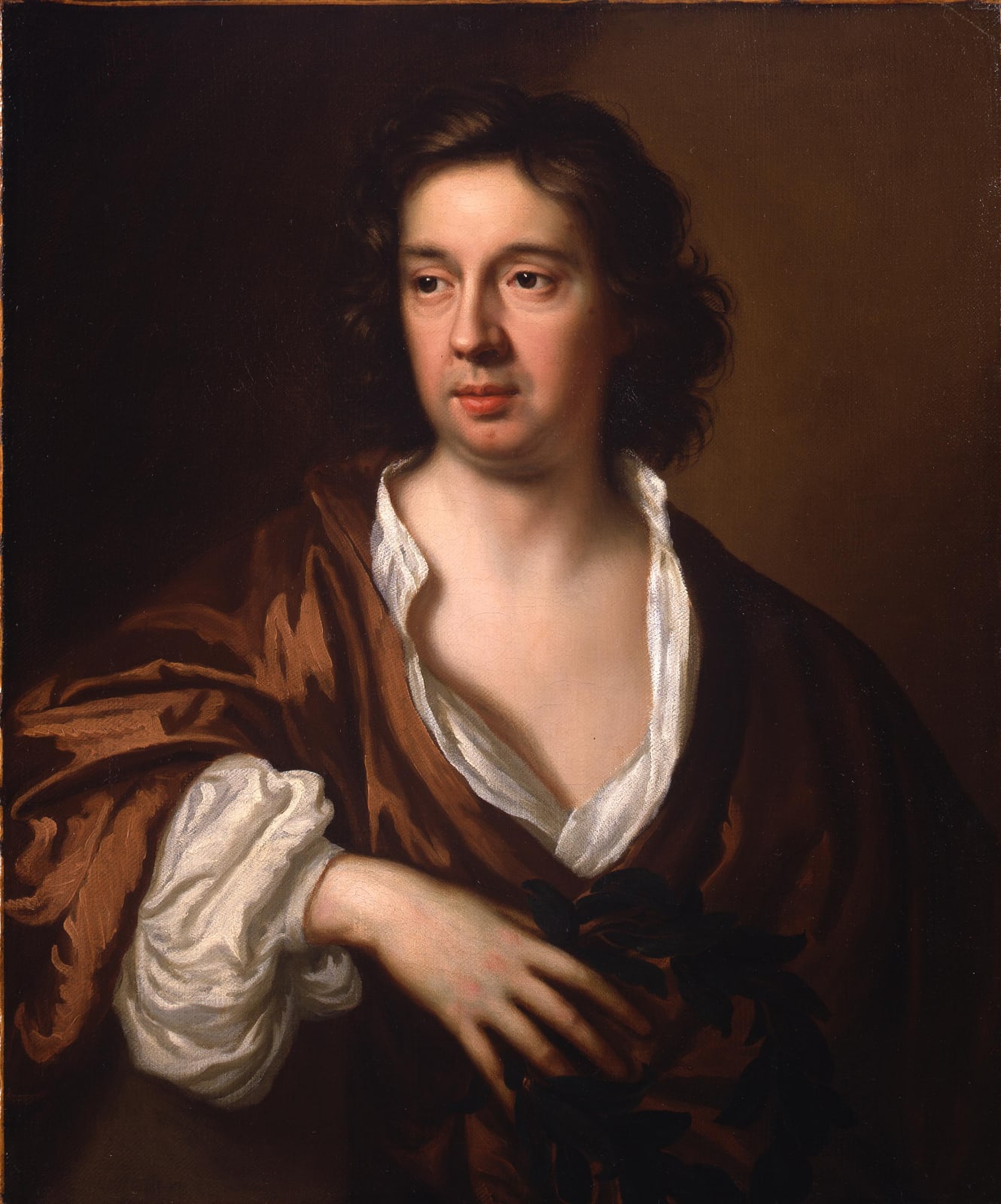
Mary Beale
To view all current artworks for sale visit philipmould.com
This portrait, which poetically depicts Mary Beale's husband, Charles, holding a wreath of laurel leaves in his right hand, ranks amongst Mary Beale's finest works. Datable to the mid-1670s when Charles would have been in his early 40s, the portrait shows an awareness of Lely's later Baroque portraits, such as Portrait of the Artist with Hugh May (Audley End). This is evident in the increased solidity and weight given to the figure, which broadly fills the picture space together with the reduced palette which is confined to almost monochromatic colours of brown and white for greater contrast. The distinctive bed ticking support - a dense cotton twill that she used late in her career - produces a richer, more textured surface than canvas and is comparable to the supports sometimes used by Wissing in his portraits of the 1670s and 80s.
Traditionally, the laurel wreath is worn by a victor or someone worthy of special distinction or honour. In Charles Beale's case, however, it could plausibly allude to his role as his wife's muse in devoting himself to organising and running her studio - a job he performed for over 20 years and recorded faithfully in his detailed notebooks. It probably also refers to his learning and scholarship. Coming from a respected family, Charles was something of a dilettante and connoisseur who enjoyed the company of leading artists, scientists and divines of the day, many of whom became key figures in the formation of the Royal Society.
Laurels are a common attribute of poets and dramatist throughout the 16th and 17th centuries. The title Poet Laureate for a distinguished poet was in use in England as early as 1529, although the first recorded grant to the office by a monarch was to Dryden in 1668. Images of British poets (often in engraved form) such as Jonson, Shakespeare, Drayton and Fletcher show the sitters wearing laurels. Charles Beale's pose and his consciously reflective manner are also palpably poetic: he is bare-chested and looks away melancholily into the middle distance, while languidly holding the wreath. Elements of this poetic pose are commonly found in portraits of British poets, ranging from John Donne as a melancholic lover (Marquess of Lothian), 2 to Kneller's portraits of Alexander Pope.
It is not surprising, given the literary mood and poetic temperament of the painting, that it was known for a long time as a portrait of the dramatist and Poet Laureate Thomas Shadwell (16427-92). Perhaps significantly, other portraits of Charles Beale have passed at some time as the poets Dryden, Otway and Cowley. A small sized portrait in the National Portrait Gallery was also identified for many years as a portrait of Shadwell, until comparison with a miniature of Charles by Flatman in the Victoria and Albert Museum.
This painting formerly belonged to the Dukes of Wellington at Apsley House, having been presumably bought or given to the 1st Duke.
Thomas Shadwell. It is recorded as hanging in the Entrance Hall in the 1901 inventory drawn up by Evelyn, Duchess of Wellington. The painting was subsequently sold by the 7th Duke at Sotheby's in 1947, shortly before the house was opened as a museum.
Provenance
Arthur Wellesley, 1st Duke of Wellington (1769-1852) at Apsley House, London;By descent to Gerald, 7th Duke of Wellington (1885-1972);
His sale, Sotheby's, 26 November 1947, Lot. 18 (as a portrait of Thomas Shadwell);
Private Collection, U.S.A.;
Christie's East, New York, 2 October 1996, Lot. 117 (as Circle of Charles Beale I - Portrait of a Man)
Literature
Evelyn, Duchess of Wellington, A Descriptive & Historical Catalogue of the Collection of Pictures and Sculpture at Apsley House, London, 1901, Vol. 11, No. 233, p. 399-400;David Piper, Catalogue of Seventeenth-century Portraits in the National Portrait Gallery, 1963, under no. 1279, p. 23;
Elizabeth Walsh & Richard Jeffree, The Excellent Mrs Mary Beale, exh. cat., 1975, under cat. no.3, p. 21 & check list no. 17, p. 68.
Be the first to hear about our available artworks
* denotes required fields
We will process the personal data you have supplied in accordance with our privacy policy (available on request). You can unsubscribe or change your preferences at any time by clicking the link in our emails.